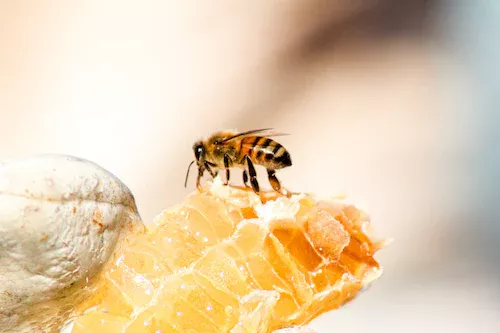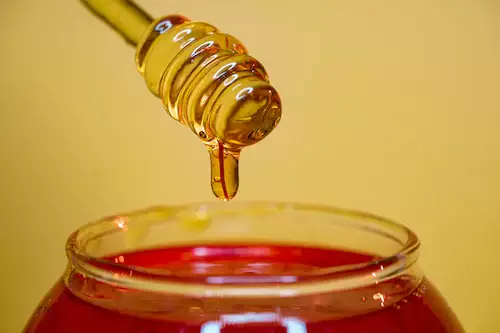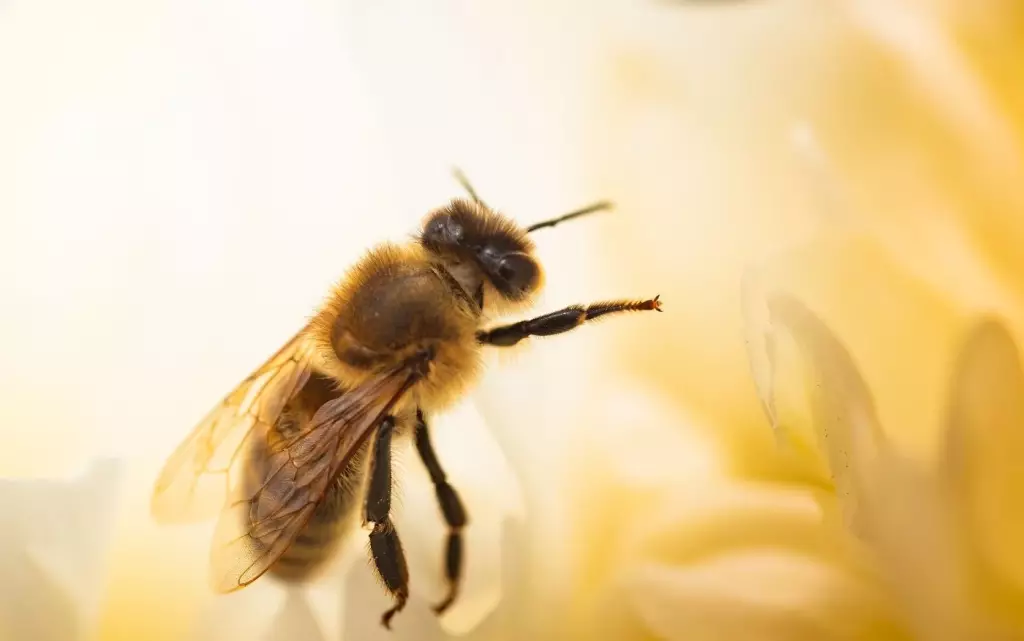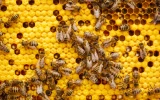The 11 Most Useful Bee Products (and Their Uses)
Bees are not just buzzing insects, they are also master producers of some of the most useful products in the world. Honey, beeswax, propolis, and royal jelly have been used for centuries for their medicinal and nutritional properties. In this article, we'll explore the incredible benefits of these bee products and how you can benefit from these incredible insects.
The most useful bee products are honey, beeswax, bee pollen, bee venom, propolis, royal jelly, honeycomb, beebread, apilarnil, drone pupa, and wax moth. All these offer health benefits and unique uses, from the ever-so-sweet honey, which is a natural sweetener, to beeswax, a key ingredient in candles and cosmetics.
In this article, we'll explore the various useful products created by bees and their versatility in everyday life. We'll discover their unique properties and uses, from traditional remedies to modern innovations. The potential of these bee-derived substances is truly remarkable, showcasing the importance of these busy little insects in our daily lives.
Summary
- Beeswax, honey, propolis, bee venom, and bee pollen are some of the common bee products.
- Bee venom has therapeutic properties, while propolis is a natural antibiotic.
- Wax moths are used as a protein supplement in some countries.
- Bee pollen and propolis can be supplements that provide nutrients such as antioxidant properties and vitamins.

On this page:
11 Useful Bee Products and Their Uses
There are 11 bee products that have proven to be particularly useful for humans. These natural substances have been used for thousands of years for various purposes, such as food, sealants, lubricants, construction materials, and medications. As people continue to discover new applications for these products, their popularity and demand have risen considerably.
Bee products have a wide range of uses, from nutrition to cosmetics and medicine, and have been known for their numerous health benefits and applications. Here, we will explore the 11 most useful bee products, their health benefits, and applications:
| Bee Product | Health Benefits and Uses |
|---|---|
| Honey | Natural sweetener, cooking and baking ingredient, source of carbohydrates and antioxidants |
| Beeswax | Candle-making, cosmetics, furniture polish, DIY modeling clay, agriculture, art, and industry |
| Bee pollen | Nutrient-rich supplement, anti-inflammatory |
| Propolis | Natural antibiotic, wound healing, immune system booster |
| Royal jelly | Nutrient-rich supplement, anti-inflammatory, skin care ingredient |
| Bee venom | Anti-inflammatory, antiviral, antibacterial |
| Honeycomb | Edible, health supplement, natural sweetener |
| Bee bread | Nutrient-rich supplement, probiotic |
| Apilarnil | Dietary supplement, have properties that support the immune system |
| Bee brood | Rich in nutrients, including proteins, vitamins, and minerals |
| Mead | Alcoholic beverage made from honey |
Honey is the most known bee product
One of the best-known bee products, honey, is a natural sweetener used in many foods and beverages. Its antibacterial properties make it useful in topical applications for wounds and burns. Honey also has medicinal benefits for coughs and throat irritations.
Honey is a natural sweetener and has been used for its antimicrobial and anti-inflammatory properties. It is often used to soothe sore throats and coughs, as well as to support skin health and wound healing.
Bee pollen is believed to have immune-boosting properties
A nutrient-rich bee product consumed by both bees and humans, bee pollen contains vitamins, minerals, and proteins. It is believed to have anti-inflammatory, antioxidant, and immune-boosting properties.
Bee pollen is a powerful antioxidant and is believed to provide a variety of vitamins, minerals, and antibiotics. Some of the potential health benefits include boosting the immune system, improving digestion, and reducing inflammation.
Royal jelly is used primarily in skin care products
Royal jelly is a substance secreted by worker bees and fed to bee larvae. Known for its health benefits, it is believed to possess antimicrobial, antioxidant, and anti-inflammatory properties. Royal jelly is often used in dietary supplements and skin-care products.
Royal jelly is used primarily for skin care and treating allergies. It contains a mixture of proteins, vitamins, and minerals that may improve skin health, increase collagen production, and reduce the symptoms of allergies.
Beeswax can be a sealant and a base for cosmetics
As a natural by-product of beekeeping, beeswax is used as a sealant, lubricant, and a base for cosmetics. Thanks to its emollient and protective qualities, beeswax is often found in lip balms, moisturizers, and candles.
Beeswax is widely used to make candles, lip balms, and skin care products. It serves as a natural emollient and has mild antibacterial properties.
Propolis is known for its antimicrobial properties
A mixture of bee saliva, beeswax, and tree sap, propolis is known for its antimicrobial properties. It is used in a variety of applications, from natural remedies to dental care products.
Propolis is a resin-like substance that bees use to seal cracks in their hives. It has been used for its wound healing properties and is believed to have antibacterial, antiviral, and antifungal effects.

Honeycomb is a rich source of antioxidants
The hexagonal structure bees build to store honey, or honeycomb, is not only an architectural marvel but also a versatile food product. Used as a natural alternative to processed sugar, it can be eaten directly or used to sweeten drinks and desserts.
Honeycomb, which is made from beeswax and filled with honey, can be consumed directly or used to make various food products. It is a rich source of antioxidants and phytonutrients that may help improve overall health.
Beebread is a significant source of vitamins
Also known as ambrosia, beebread is a fermentation of bee pollen, nectar, and honey. Beebread is believed to have health-promoting properties and is used to treat digestive and immune system issues.
Beebread, also known as fermented bee pollen, is a significant source of vitamins, minerals, and amino acids. It is believed to have beneficial effects on digestion and immune system function.
Bee venom has anti-inflammatory properties
A natural defense mechanism for bees, bee venom contains peptides with anti-inflammatory and pain-relieving properties. It has been used to treat arthritis and other joint-related maladies.
Bee venom is often used to treat arthritis, as it has anti-inflammatory properties and can help reduce pain and inflammation in joints.
Apilarnil has properties that support the immune system
Derived from the larvae of male bees, apilarnil is used as a dietary supplement for its alleged antioxidant, anti-inflammatory, and immune-boosting effects.
Apilarnil, a substance derived from drone larvae, is believed to have properties that support the immune system, improve fertility, and enhance overall vitality.
Bee brood is rich in proteins, vitamins, and minerals
A nutritious source of amino acids, minerals, and vitamins, bee brood is harvested for human consumption in some cultures. It is believed to have potential health benefits, including immune system support.
Bee brood is rich in nutrients, including proteins, vitamins, and minerals. It is believed to support overall health, promote growth and development, and help with heart health.
Mead has antioxidant properties
Mead, the alcoholic beverage made from fermented honey, is often touted for its potential health benefits. Honey, the main ingredient in mead, is rich in antioxidants that may help protect against cell damage and reduce inflammation in the body.
Mead may contain probiotics, which are beneficial bacteria that can improve gut health and boost the immune system. It is naturally low in histamines, making it a good option for people with histamine intolerance or allergies.
Safety Precautions and Allergy Considerations of These Products
While the use of bee products offers various health benefits, it is essential to consider safety precautions and potential allergies. Some people might experience allergic reactions to bee products, ranging from mild to severe. Before incorporating any bee products into your daily routine, it is crucial to know about potential risks and safety measures.
Consider wearing light-colored, smooth-finished clothing when working around bees, as it can help prevent stings. Additionally, avoid using perfumed soaps, shampoos, deodorants, and any scented products that might attract bees, such as bananas and banana-scented toiletries. Keeping clean can also lessen the likelihood of angering bees and being stung.

People who are allergic to bee stings should exercise extra caution. In the case of a mild reaction, applying hydrocortisone cream or calamine lotion can help to ease redness, itching, and swelling. An oral antihistamine containing diphenhydramine (Benadryl) or chlorpheniramine is also useful if the itching or swelling becomes bothersome. Avoid scratching the sting area to reduce the risk of infection.
Bee pollen, another popular bee product, may trigger severe allergic reactions in some individuals, and its use during pregnancy should be avoided due to limited safety data. It is also essential to consult with a healthcare provider, such as a pediatrician, before giving bee pollen to children. Lastly, be cautious with bee pollen, as it may interact with certain medications.
It is crucial to be aware of potential allergies and take necessary safety precautions while using or handling bee products, as well as when working around bees. Being well-informed will ensure that you can enjoy the numerous benefits of these remarkable products without putting yourself at risk.



